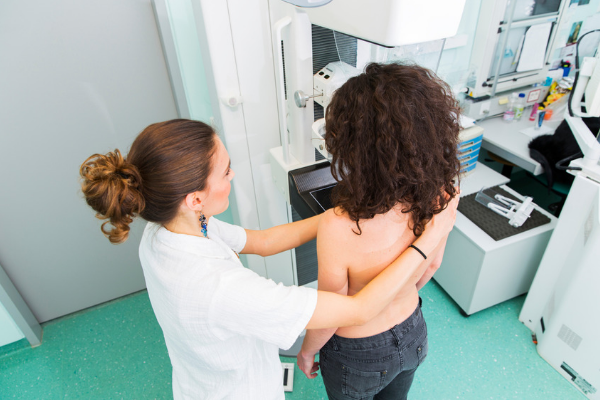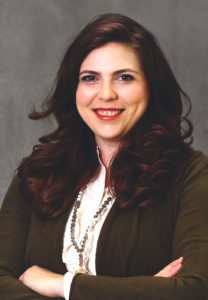 October is Breast Cancer Awareness Month. But you shouldn’t wait until October every year to learn about breast cancer, especially when it comes to maximizing your own breast health.
October is Breast Cancer Awareness Month. But you shouldn’t wait until October every year to learn about breast cancer, especially when it comes to maximizing your own breast health.
Annual mammography screening doesn’t start for most patients until age 40. All of the major professional organizations involved in caring for women and breast patients recommend yearly screening mammograms starting at age 40 for women of average risk of developing breast cancer. This results in the highest rate of breast cancer detection and the most lives saved — up to 13,000 a year in some studies.
But for women under 40 who haven’t aged into the routine annual mammogram pool, there are still things you can do to optimize your breast health.
 Take control of your breast health today.
Take control of your breast health today.
While rare, breast cancers can occur in women under the age of 40. Be diligent about self-exams and have any breast-related concerns evaluated by a medical professional. Screening mammography is not recommended for most women prior to age 40 because breast cancer is so rare before this age.
Breast Health Awareness
When early breast cancer is diagnosed, it tends to be larger and more aggressive, which means it’s harder to treat. Don’t ignore any issues that pop up before that milestone 40th birthday. There are several things you can do to look after your breast health in your 20s and 30s.
1. Know your breast cancer risk score.
“I read a handful of screening exams every day from women with risk factors that combine to place them at high risk for breast cancer who have no idea they are at higher risk,” says Dr. Rachel Preisser a radiologist at The Iowa Clinic. “Some women don’t realize their risk for developing breast cancer until they come in for their first mammogram at age 40.”
In April, the American College of Radiology made a major change to their recommendations for high-risk screening populations: every woman should have a risk assessment before age 30 to see if regular breast cancer screening is needed earlier than age 40.
“Less than 15 percent of breast cancers are considered hereditary, meaning they’re associated with a gene mutation,” says Dr. Preisser. “We recommend a risk assessment to look at a lot of different risk factors so we don’t miss out on an opportunity to do high-risk screening earlier.”
One in every eight women will be diagnosed with breast cancer in their lifetime. But individual risk varies.
The risk assessment tool Dr. Preisser recommends gives you a personalized risk score. It calculates your chances of developing breast cancer by considering your family history, the age when you had your first child, other breast diseases you’ve had, and many other factors.
If the risk assessment shows you’re at high risk — meaning you have a 20 percent or greater chance of developing breast cancer in your lifetime — you’ll start a breast cancer screening program before the age of 40. In addition to an annual mammogram, you’ll also get an annual breast MRI. Those tests will be staggered in six-month intervals so your provider can monitor changes in your breast tissue more frequently and catch any changes as soon as possible.
A lifetime risk of breast cancer of less than 20 percent is considered average. No early screening is necessary. But you can still follow good breast health practices by controlling for other risk factors, performing regular self-checks, and doing annual health maintenance.
“It’s always a good idea to have your provider do a clinical evaluation of the breasts when you go in for an annual or health maintenance exam,” says. Dr. Preisser.
2. Reduce the risk factors you control.
There are many risk factors for breast cancer that you have no control over — your female gender and advancing age being the most prevalent among them. There are several others you can modify to minimize your risk of breast cancer.
“Some risk factors, including gene mutations, chest radiation therapy from childhood or early adulthood cancer treatment, excessive estrogen exposure, and breast density, are often out of our control,” says Dr. Preisser.
“Beyond that, there are some other, less robust risk factors that you can change — not having a sedentary lifestyle, avoiding smoking and heavy alcohol use, trying to maintain a healthy weight — things like that,” she says. “While any one of them is not a huge risk factor, if you put them all together, that can have an impact.”
3. Get to know your breast tissue.
Nearly 80 percent of breast cancers in young women are initially found by the women themselves. The biggest thing you can do, especially if you are at average risk, is to know what normal is for your breasts and proactively seek help when something’s not right.
“Do those monthly self-exams. The best thing you can do is to know your breast tissue. We’d rather have you come in for an evaluation and ease your concern than have you ignore a problem and miss an opportunity to intervene,” says Dr. Preisser, who advises you look out for:
New lumps and bumps
Persistent pain that doesn’t go away with your cycle
Nipple discharge — particularly if it’s clear or bloody
Changes to the skin or nipple
You should pay special attention during pregnancy and breastfeeding.
 Breast cancers diagnosed in young women are very rare. But within the population of early breast cancers, there’s a unique group of patients who have pregnancy-associated breast cancer (PABC). Thirty percent of breast cancer diagnoses in younger women occur during pregnancy or within a year after having a baby.
Breast cancers diagnosed in young women are very rare. But within the population of early breast cancers, there’s a unique group of patients who have pregnancy-associated breast cancer (PABC). Thirty percent of breast cancer diagnoses in younger women occur during pregnancy or within a year after having a baby.
Between pregnancy and lactation, your breasts undergo a lot of change in those years. It can be difficult to understand what’s normal for a mom to experience or what you should be more concerned about. But if something doesn’t feel right, Dr. Preisser advises you still get your concern evaluated.
“The breasts are obviously going through some pretty drastic changes in that experience. If you come in for an evaluation of a new lump while pregnant or breastfeeding, the majority of the time it’s going to be something noncancerous,” she says. “However, although pregnancy-associated cancers are very rare, they do occur, so we don’t want anyone to ignore breast changes.”
About Dr. Rachel Preisser, MD
 Dr. Preisser specializes in Medical Imaging & Radiology To make an appointment with Dr. Preisser, please call 515-244-5109. Her primary location is the Iowa Clinic West Des Moines campus.
Dr. Preisser specializes in Medical Imaging & Radiology To make an appointment with Dr. Preisser, please call 515-244-5109. Her primary location is the Iowa Clinic West Des Moines campus.
Connect with The Iowa Clinic
Facebook: www.facebook.com/IowaClinic
Twitter: twitter.com/theiowaclinic
YouTube: www.youtube.com/user/TheIowaClinic
LinkedIn: www.linkedin.com/company/the-iowa-clinic-p.c.
















